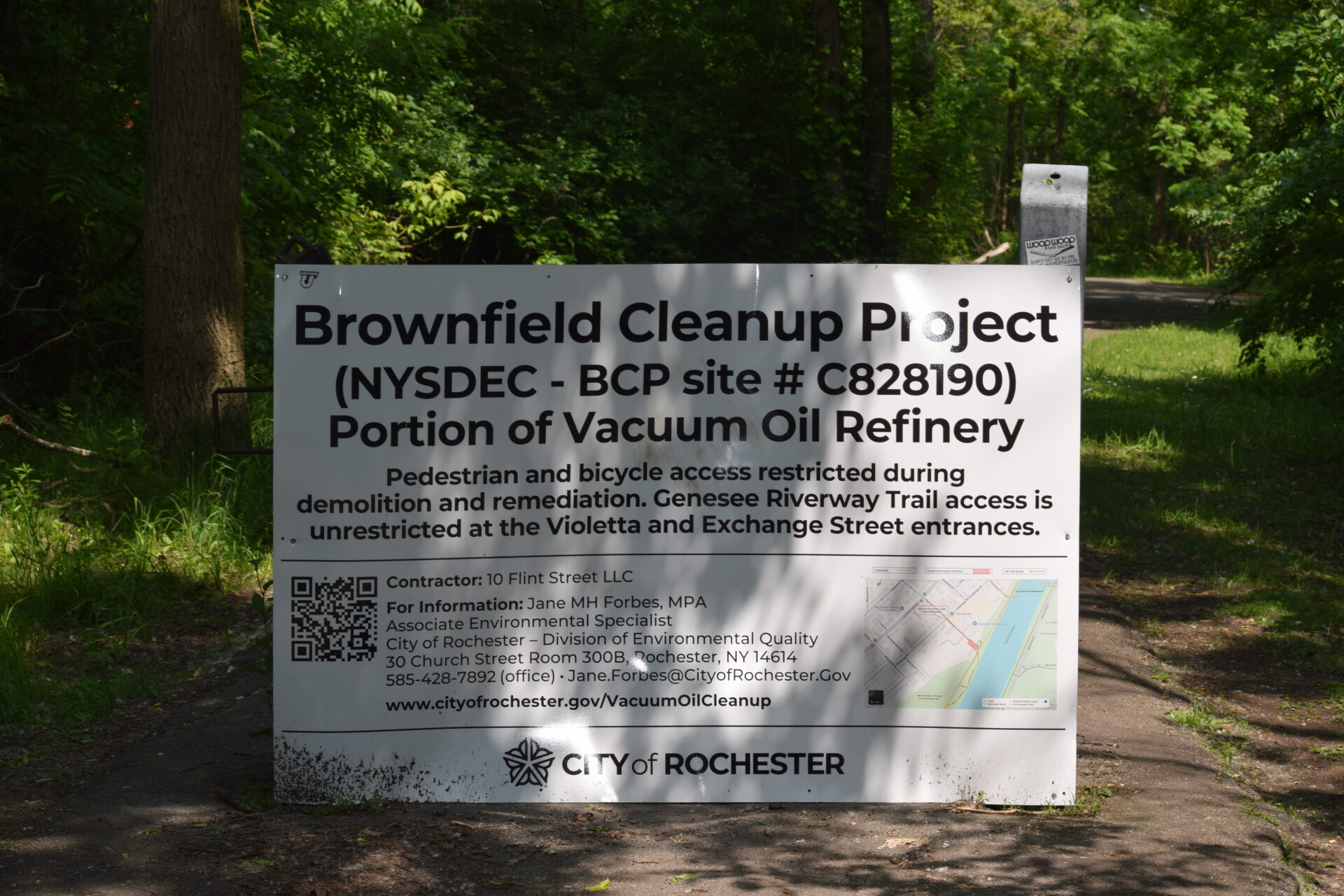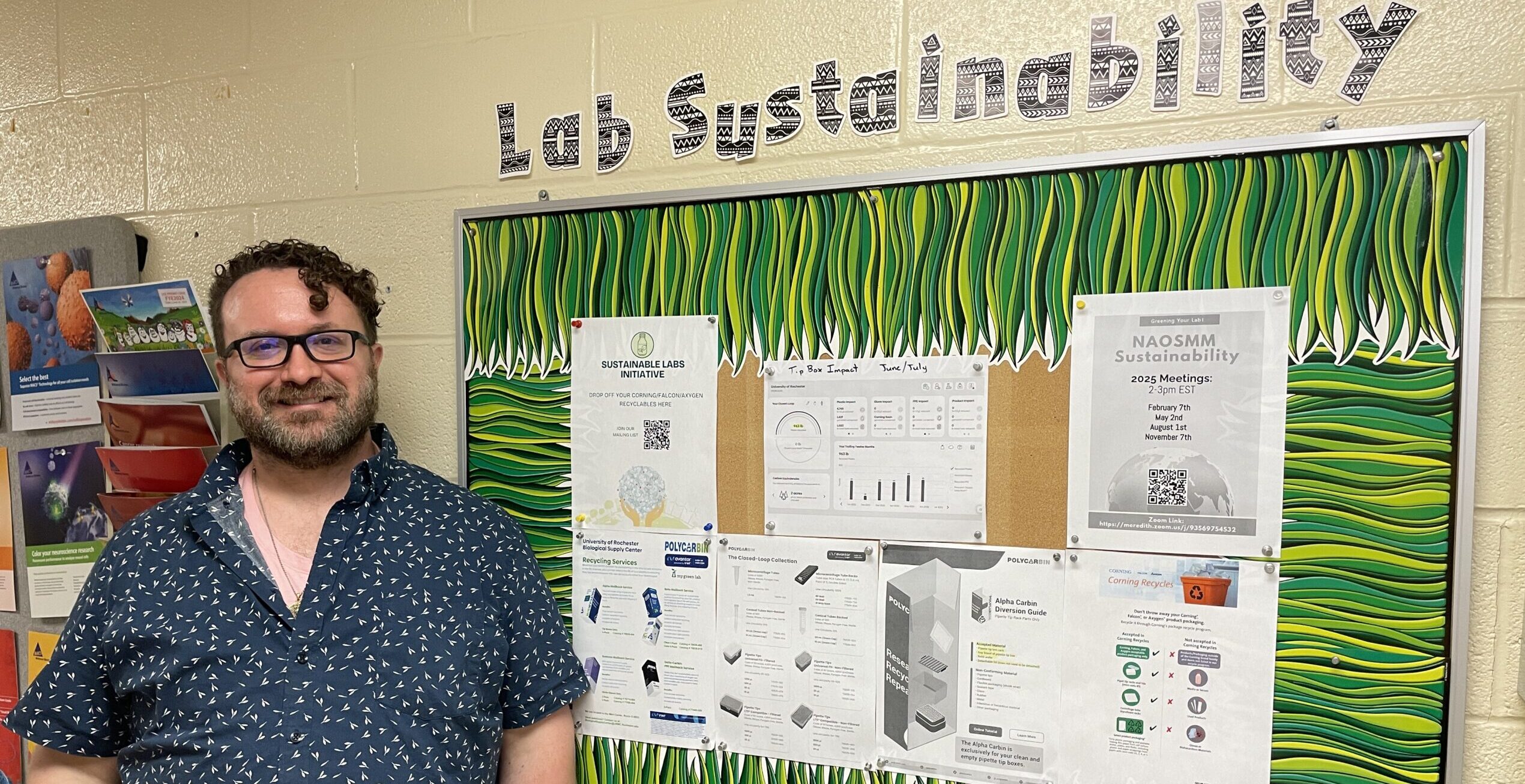Throughout the fall, students at Riverview Apartments and those walking the Genesee Riverway Trail may wonder what the absence of trees and bustling earthwork is all about along the riverbank. This work is part of the Brownfield Cleanup Program, a state-driven initiative scraping away decades of contamination, restoring the riverbank, and replanting native species so that the community and nature can thrive once again.
According to the U.S. Environmental Protection Agency, a brownfield is typically a former commercial or industrial property harboring hazardous contaminants, pollutants, or substances that prevent redevelopment and the buying or selling of the property. Without proper intervention, such properties remain contaminated and unusable.
With a rich industrial history, Rochester is a prime example of the need for brownfield remediation. There are estimated to be over 450,000 brownfields within the United States. As of 2023, New York State has 669 brownfields currently under redevelopment, according to the New York State Department of Environmental Conservation (NYSDEC). This includes the brownfield just across the Genesee River from the University of Rochester.
This site is just one of many parcels of land spanning 30-40 acres east of Plymouth Avenue, collectively called the ‘Vacuum Oil Brownfield Opportunity Area’ (BOA). This land once housed the Vacuum Oil Company (a predecessor of ExxonMobil), which operated as an oil storage, refinery, and blending facility from 1866 to 1935.
The industrial activity that historically took place in the Vacuum Oil BOA has led to soil contamination, still present after 90 years. “The primary contaminants at the [Vacuum Oil] site are Volatile Organic Compounds (VOCs), Semi-Volatile Organic Compounds (SVOCs), and heavy metals, which are all constituents of petroleum products” says Anne Spaulding, Manager of Environmental Quality for the City of Rochester. These industrial remnants make cleanup a complex endeavor.
Timeline and current activities
Cleaning up the brownfield from the Vacuum Oil refinery is a phased effort that began in 2015. The current phase focuses on excavating the contaminated top layer of soil within the next month and installing new uncontaminated soil in its place. The City of Rochester and NYSDEC have set clear benchmarks for progress: from assessment, sampling, and remediation to eventual site redevelopment and habitat restoration. Passersby might see work crews, heavy machinery, blocked-off land, and large informational signs around the area.
However, Spaulding assures that the trail and surrounding area are safe for students, staff, faculty, and community members to continue to use during the cleanup process.
“There are no exposure pathways, or routes of exposure, for the contaminants currently known to be present at the site to affect the community or trail users,” says Spaulding. “While low levels of contaminants, mostly metals, are present in the shallow subsurface soils, gross contamination is bound up in subsurface soils at depths in which people will not normally come into contact. In addition, the City prohibits the use of groundwater as a potable source of water, so there is no risk of exposure to dissolved contaminants.”
Looking forward
Remediating brownfields is about revitalizing neighborhoods and nature, not just clearing away old pollutants. Across the state, this work paves the way for new parks, businesses, trails, and housing, improves local air and water quality, and helps reduce health risks linked to environmental contamination.
Several other Vacuum Oil brownfield sites along the Genesee River Walkway are undergoing remediation, among many other brownfields in Rochester that are being or have been redeveloped. For instance, one landfill site has been redeveloped into a solar farm that, in its first year, eliminated the equivalent of 2,300 tons of CO2 emissions. Other sites have been turned into safe residential areas, commercial buildings, and more. A list of other brownfields can be found through the Office of Environmental Remediation (OER).
For those passing by the fenced-off areas along the Genesee, the ongoing brownfield cleanup reflects a city addressing its industrial past while working toward a safer and healthier environment. As projects like this continue, Rochester is creating opportunities for new uses of these spaces and contributing to long-term environmental improvement.
Written by Kylin Roberts (’26)




